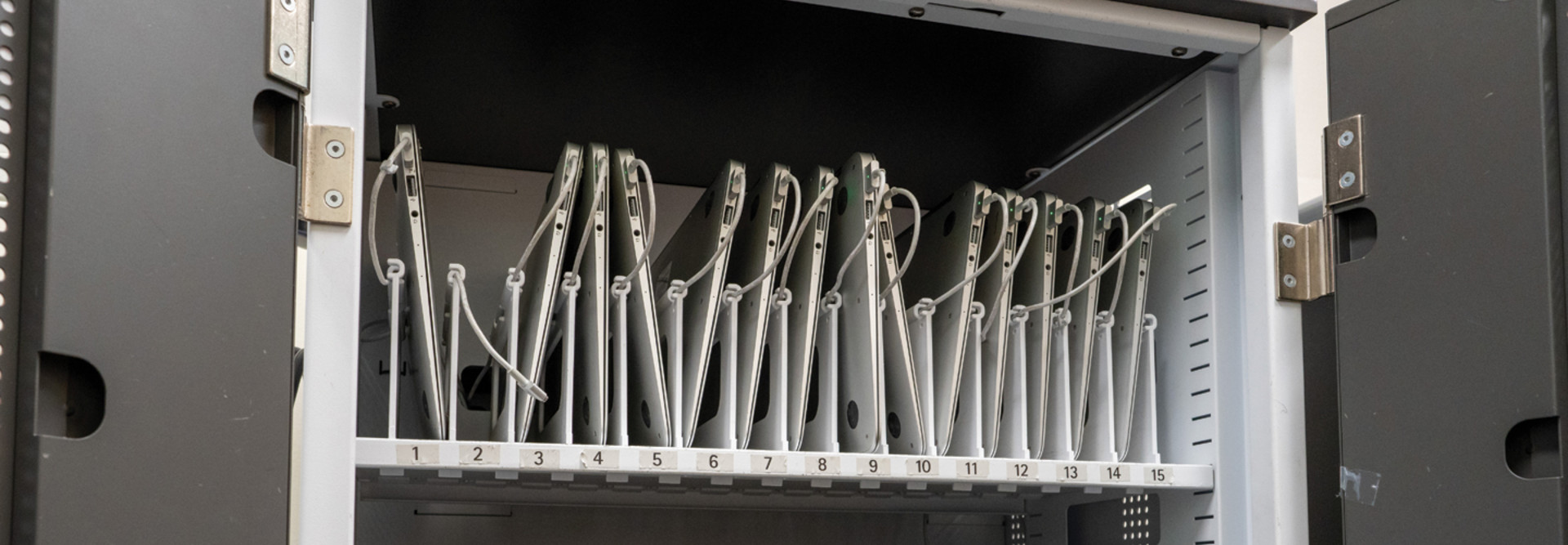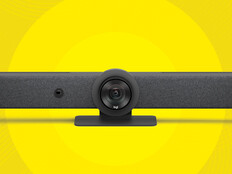School districts with limited IT staff can also save time by using charging lockers. While they don’t have the mobility of a cart, these solutions create a simplified system for repairing student devices.
“The lockers are cloud-based,” says Rob Fox, director of sales for education at Bretford. “The IT guy can send a text or an email to a particular student saying, ‘put it in this locker in bay three,’ give them a code or an RFID strip, and they can go and put it in. Then, at their convenience, the IT guys can go, grab it and work on it. Vice versa, you can also redeploy very easily.”
Allowing a district with a limited IT staff to collect and return the devices on their own schedule keeps workflow moving efficiently. It solves logistical challenges for the staff, the educators and the students.
MORE ON EDTECH: Support understaffed IT teams with these tips.
2. Laptop Charging Carts and Stations Create Physical Touchpoints
Though many students are returning to classrooms this fall, concerns surrounding COVID-19 still remain, particularly in communities where variants of the virus are spreading. Children under 12 can’t be vaccinated yet, and a one-to-one model in which students are sharing devices is in itself a challenge.
Some tech cart companies have begun putting sanitizing UV lights in their carts and lockers. This joint charging and sanitation solution works well for schools where students leave their devices overnight. However, time again becomes a factor for UV sanitation.
“It takes eight minutes, which sounds fast, but a big concern is classroom time,” Fox says. “So, how much time are you taking away from actual instruction?”
He suggests that districts include device cleaning as part of their regular building sanitation process. “Most districts have built most of that into their facilities budget,” he says. This allows devices to be cleaned regularly when a UV solution would take too much time.
DIVE DEEPER: Sanitation solutions allow districts to protect students when reopening.
3. Wiring in Laptop Charging Stations Causes Frustration
Cord management and adaptors can also cause headaches for educators and IT staff when it comes to device charging carts.
Device manufacturers are already working toward a solution in one way. “There’s been a convergence on USB-C,” Fox says. “Google, Dell and HP have all funneled into having USB-C as their charging methodology.”
With fewer adapters needed in new devices, IT leaders have one fewer piece to keep track of.
Additionally, many charging carts now are designed with cord management solutions, such as Bretford’s prewired carts. This saves IT teams time, as they don’t have to manually wire the carts upon receipt. Having the built-in wiring also saves educators and students time, as they aren’t fighting to untangle chargers when taking or replacing their devices.
As long as students have devices, they will need a way to charge them. Tech carts have continually evolved to meet the needs of the K–12 students and educators who use them. With one-to-one models in full swing in many districts, the need for tech carts in classrooms “is established like fries with the burger — the burger being the device,” says Fox.












